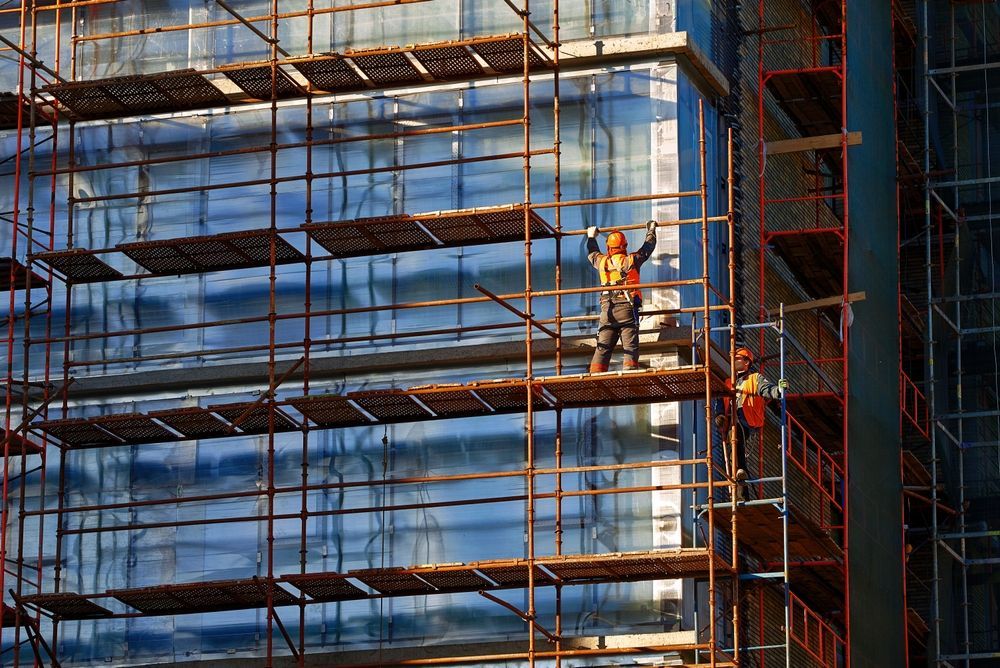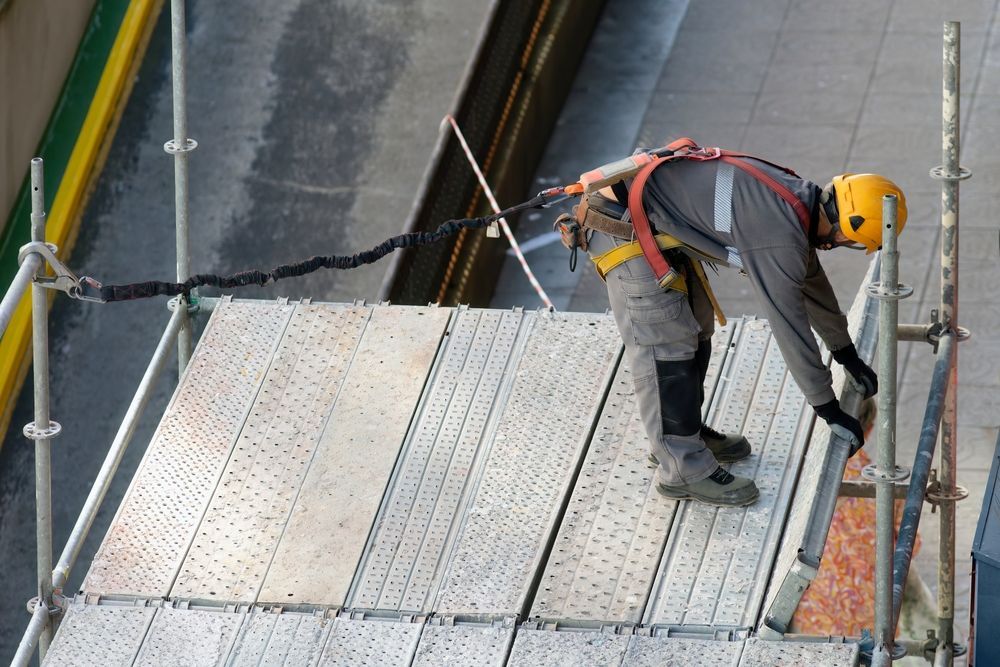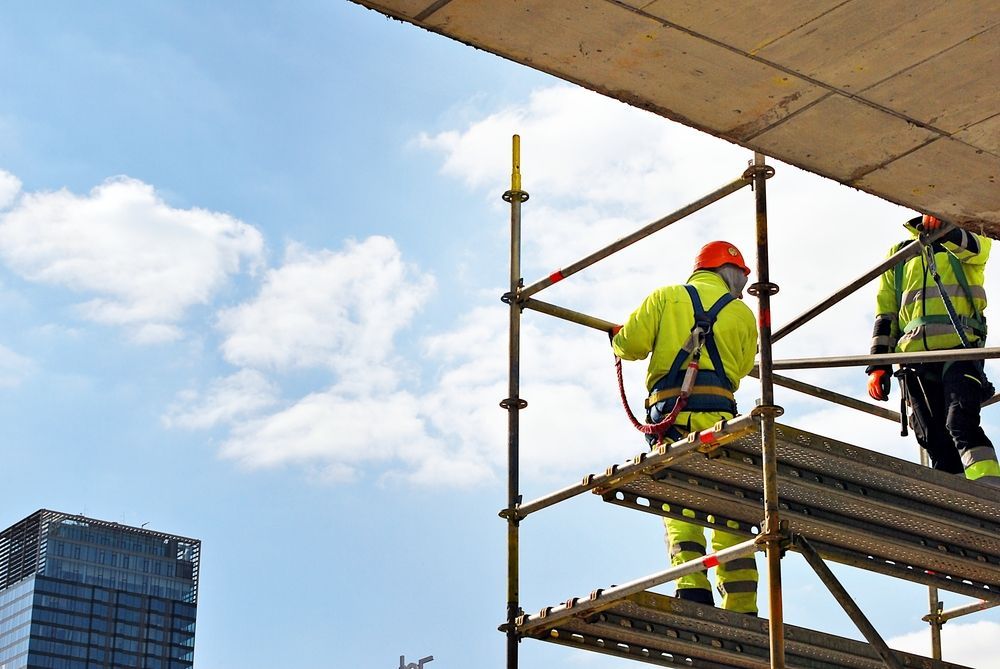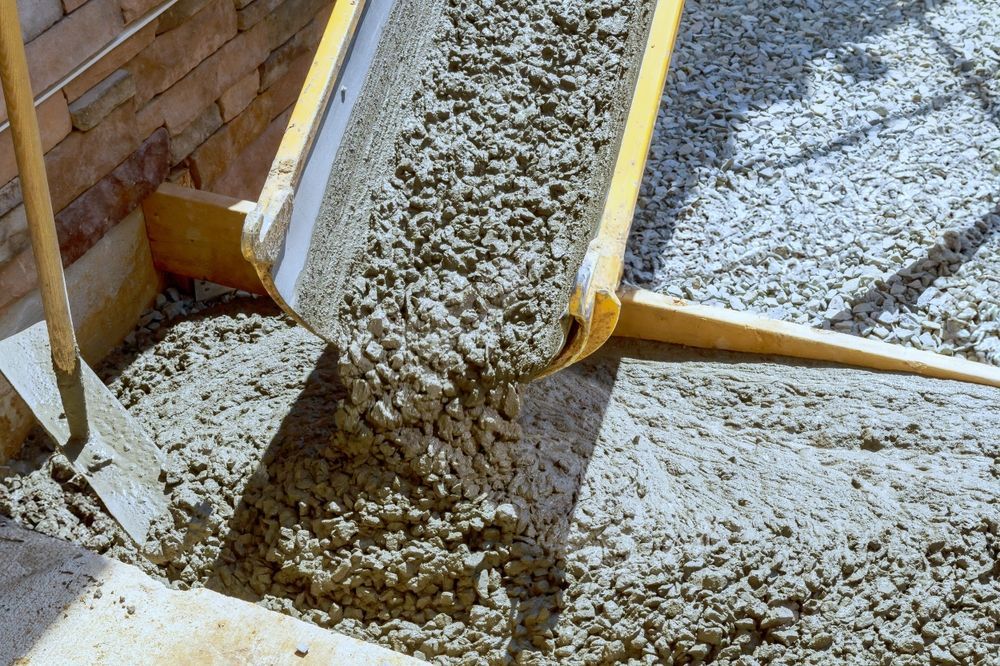OSHA Scaffold Requirements & Best Practices
Written by: Bracing Systems

If your construction business uses scaffolds to reach high places for painting, renovation, construction, or installation purposes, it's important to follow OSHA scaffold requirements. OSHA scaffold requirements help keep workers and keep your job site safe. Knowing scaffold requirements is an essential part of managing a construction business. Here's what you need to know to maintain compliance with OSHA safety laws.
What Are OSHA's Scaffold Requirements?
OSHA scaffold requirements are intended to ensure that your scaffold platforms are safe. Scaffold requirements are designed to prevent accidents like accidental falls and scaffold overload.
OSHA scaffold requirements include:
- Scaffold planking must be able to support its own weight and at least four times the intended load.
- Scaffold platforms and walkways must be at least 18 inches wide.
- Scaffolding must not be scattered with debris when scaffolding is in use.
- Guardrails and/or personal fall arrest systems must be used on scaffolds. Guardrails are required on scaffolding more than 10 feet above the lower level. Guardrails must be installed along open sides and ends.
- Fabricated platforms and planks as well as solid sawn wood may be used as scaffold planks. This use should be recommended by the manufacturer, inspection agency, or lumber grading association.
- Steel or plastic banding must not be used as a top rail or a mid rail.
- People using scaffolding must be trained by someone who is trained to identify hazards. Anyone using scaffolding must be trained to control or minimize hazards. Training must include hazards relating to falls, falling objects, proper use of the scaffold, electrical hazards, and handling of materials.
In addition to the above requirements, scaffolding should be inspected by a competent person who has been trained to assemble scaffolding correctly and identify times when scaffolding is not correctly assembled.
OSHA requirements are numerous. There are many requirements in addition to the ones listed above. To see all the OSHA scaffold requirements, see the OSHA website.
Types of Scaffolds Covered by OSHA
OSHA requirements cover a huge range of scaffold types including:
- Float scaffold
- Aerial lifts
- Carpenter's bracket
- Bricklayer's square
To see all scaffolds that OSHA regulates, see the OSHA website.
OSHA requirements cover these scaffolds and lifting platforms because they pose significant safety risks to workers, particularly the risk of falls, which is one of the leading causes of injuries and fatalities in construction and other industries. The key reasons OSHA regulates these specific scaffold types include:
Worker Safety: Each of these scaffold types is used to elevate workers to heights where they are exposed to potential falls, which can result in severe injuries or death. OSHA standards are designed to minimize these risks by setting guidelines for proper use, construction, and maintenance.
Structural Integrity: Scaffolds need to be structurally sound and capable of supporting both the workers and the materials they are handling. OSHA regulations ensure that these structures are built, maintained, and used in a way that prevents collapse or failure.
Fall Protection: OSHA requires specific fall protection measures, such as guardrails, personal fall arrest systems, and safe access, to be in place when workers are on scaffolds. This ensures that even if a worker loses balance, they are less likely to suffer serious harm.
Specific Hazards: Each type of scaffold has unique hazards associated with its design and usage. For example, aerial lifts and scissor lifts involve moving parts and height adjustments, which introduce different risks compared to stationary scaffolds. OSHA tailors its regulations to address these specific risks.
Compliance and Accountability: By regulating these scaffold types, OSHA can enforce compliance through inspections, citations, and penalties, ensuring that employers maintain safe working conditions.
Best Practices for Scaffold Safety
Your construction business must take steps to enforce the OSHA scaffold requirements. The following best practices can help ensure scaffolding safety for your construction site.

- Make safety a policy. Write and enforce policies regarding worker training and worker expectations for scaffold use. Work with your safety professional and/or with your construction supervisors to create policies that work in the field while also maintaining compliance with OSHA standards.
- Put someone in charge of scaffolding safety. Appoint one person or one team in charge of inspecting scaffold platforms and supervising scaffolding use to ensure scaffolding is erected and used in compliance with OSHA requirements and your worksite policies.
- Create a culture of safety at your construction workplace. Safety starts with the people in charge. Workers can only be expected to take safety seriously if their managers are serious about it as well. Create a culture of safety at your construction company by showing that managers, supervisors, foremen, and others in charge all take safety seriously.
Common Mistakes to Avoid in Scaffold Setup
Below are some common mistakes that occur during scaffold setup. Create procedures on your job site (as suggested above) to help ensure these mistakes do not happen.
- Failure to secure scaffold base. Securing the scaffold base helps keep it stable when the scaffold is in use.
- Failure to use guardrails. Guardrails must be used at all open sides and ends. Failure to use guardrails can lead to accidents, injuries, and even worker deaths.
- Improper scaffold assembly. Follow proper procedures for assembling your scaffolding.
- Failure to inspect the scaffold and guardrail after setup. Always inspect the scaffold and guardrail following setup to ensure that it's properly installed.
Tools and Products for Safe Scaffolding
Below are some of the tools and products for safe scaffold installation and use.
- Scaffold levelers. Scaffold levelers help ensure scaffolding is properly leveled, even when the ground isn't.
- Baseplates. Baseplates help keep the scaffold stable during installation and use.
- Guardrail systems. Guardrail systems are essential for helping ensure worker safety and are also essential for maintaining compliance with OSHA scaffold requirements. Proper use of guardrail systems helps save lives.
Should You Rent or Buy Your Scaffolding?
When you're trying to decide if you would prefer to rent vs. buy scaffolding, it's important to take into consideration factors like maintenance and scaffolding cost. Businesses that use scaffolding on a regular basis may choose to invest in scaffolding to save money. Businesses that buy their own scaffolding must assume the responsibility of maintaining their scaffolding.

Will Rental Scaffolding Be OSHA Approved?
Rental scaffolding can be OSHA-approved provided that it is properly maintained, installed, used, and inspected. Use the best practices listed above and follow all OSHA scaffold requirements, regardless of whether your business owns the scaffolding you're using, or you're renting scaffolding from another business.
Are You Looking for Scaffolding in the Chicagoland Area?
Bracing Systems sells and rents a range of OSHA-compliant scaffolding products and safety tools to ensure compliance and safety on the job. To learn more about our top scaffolding construction equipment options, or to rent frame scaffolding in the Hanover Park area, contact Bracing Systems. We're a trusted name in construction equipment sales and rental in the Chicago area.


